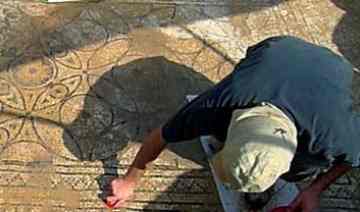Excavation works by the Syrian-German archaeological mission working at the site of Tall al-Shir in Hama unveiled five archaeological layers from the Mamluk, Byzantine and Abbasid eras.
 Director of the mission Abdul-Salam al-Bashkami said that three of the uncovered layers date back to the Mamluk era while the fourth go back to the second half of the 11th century.
Director of the mission Abdul-Salam al-Bashkami said that three of the uncovered layers date back to the Mamluk era while the fourth go back to the second half of the 11th century.
The fifth layer was found to contain two separate walls for two different rooms built of large stone. It is expected that those walls date back to the period between the end of the Byzantine era and the beginning of the Abbasid era.
Al-Bashkami said the excavations aimed at discovering the succession of archaeological levels and collecting information about human settlement patterns in the site.
"So far, probing has started of the site based on the results of the georadar survey which revealed a street as part of the planning of a Roman city," al-Bashkami added, pointing out that the pottery fragments found in the area indicate a human activity during the Hellenistic and Roman periods.
He said that the excavations done during the current season have helped unveil the time when the site was destroyed in the 11th century which can be initially associated with the major earthquakes which hit Shayzar town in 1157 and 1180.
Author: Talal Abdullah | Source: Global Arab Network [October 25, 2010]





